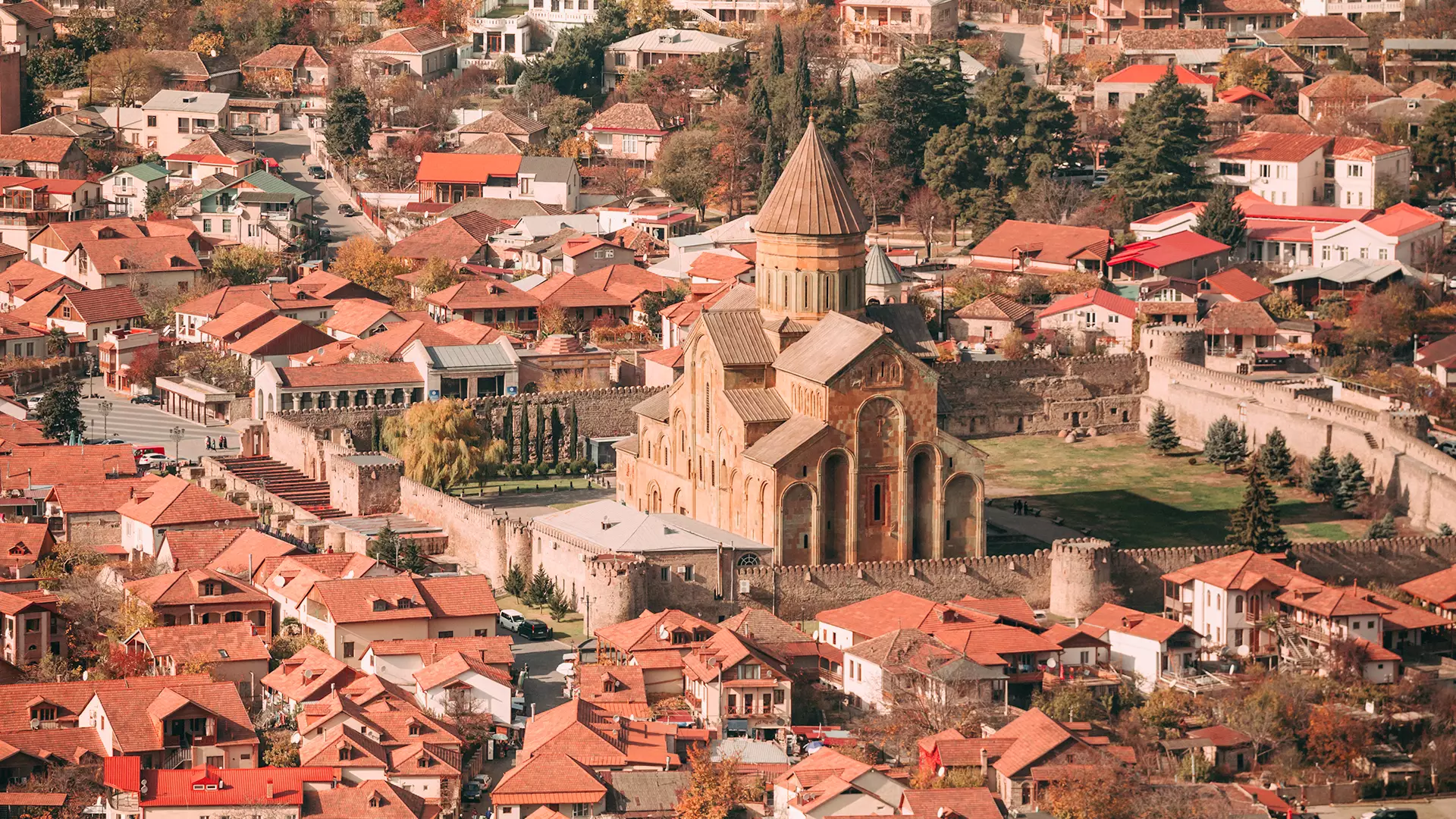Svetitskhoveli
What Makes Svetitskhoveli Special?
Svetitskhoveli is one of the most complex Georgian architectural monuments, and the largest church structure out of all the churches that have survived to the present day. It has been the main place of worship for the Georgian Orthodox community since the day it was built.
The identity of those who built churches in Georgia has long been lost to time. In this too, Svetitskhoveli is unique. According to an inscription on the western façade, a new Svetitskhoveli was built in the 11th century by the Catholicos Melchizedek, who was Catholicos-Patriarch of Georgia from 1010 to 1033, and his chief architect was Arsukidze.
The Historical Past of Svetitskhoveli
In the 4th century, the first Christian king of Georgia, Mirian III, commissioned to build a wooden church on the spot where Svetitskhoveli now stands, in the oldest capital city of Georgia, Mtskheta. The current cathedral was built between 1010 and 1029.
Svetitskhoveli has been inscribed on the UNESCO World Heritage list. The church is unique not only for its artistic value, but also since it is considered to be where one of the main relics of the Orthodox world is kept – Christ’s Robe. That's why you should visit Georgia.
A Legend about Svetitskhoveli
The very first legend about Svetitskhoveli explains the name of the original church. According to the legend, a Lebanese cedar grew from the place where Christ’s Mantle was buried. In the 4th century, following St. Nino’s instructions, the building of a church began there, and seven pillars (sveti) were made from the cedar. One of the pillars rose into the sky and only returned to the earth after St. Nino prayed for it. Healing myrrh which was used to heal the sick was oozing from the pillar. This is the origin of the name of the cathedral, which means “life-giving pillar”.
Cookie Policy

